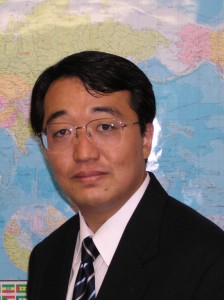緊張と統合:内村鑑三におけるキリスト教と日本の精神
このシリーズでは、私が1994年に執筆した統一神学大学院(Unification Theological Seminary)の神学課程修士論文(Divinity Thesis)を日英二か国語で掲載している。今回から3回に分けて「序論」を掲載する。
序論
キリスト教と東アジアは、共に21世紀の世界において重要な役割を担う事が期待されている。しかしながら、この二つは過去数世紀にわたる多大なる宣教の努力にも関わらず、互いに疎遠な関係にあったのである。日本は東アジアの中では最も近代化され西洋化された国でありながら、今だにキリスト教国と呼ぶにはほど遠い。キリスト教は日本においては依然として少数派であり、「バタ臭い」という一般的な言い回し表現されているように、外国の宗教とみなされているのである。すなわち、お米ではなくバターを食べる西洋人の臭いが染み着いているというのである。
キリスト教を日本文化に土着化させることは容易ならぬ仕事であり、イエズス会の状況適応型のアプローチもこれを成し遂げることは出来なかった。フランシズコ・ザビエルが1549年にゴアから日本へ航海した時、日本はフィリピンの様に宣教の大勝利の地になるかに思われた。楽観的な宣教師は、1577年に「もし充分な数の宣教師さえいれば、日本全体が10年間でキリスト教化されるであろう。」と書いている。イエズス会の宣教師は、1579年にはキリスト教に改宗した者達の本拠地としての新しい街である長崎を建てることに成功し、既に10万人の日本人改宗者がいると主張したのである。1587年には彼らは20万人の改宗者と240の教会を有していると主張した。
しかしながらキリスト教信仰の急速な拡大は突如として座礁した。フランシスコ会とプロテスタントの宣教師が到来して論争を始め、宣教師達は政治に巻き込まれた。日本の統治者は、宣教師達をスペインの侵略者達の先鋒であるとみなすようになった。1614年には、将軍家康は宣教師達を日本から追放する為の勅令を出し、その時から過酷な迫害が始まった。1614年から1646年までの間に、4045名の殉教者が出た。1638年の鎖国令によって、我国は外国人に対して閉ざされた。そして1614年の時点ではおよそ30万人いた日本のキリスト教徒は、結局1697年までに絶滅してしまったのである。
Introduction
Both Christianity and East Asia are supposed to take important roles in the twenty-first century world. However, these two had been alienated from one another in spite of tremendous missionary efforts of the past centuries. Even though Japan is the most modernized and westernized country in East Asia, it is still far from being a Christian country.(1)Christianity is still a minority in Japan and regarded as a foreign religion as it is expressed in a popular phrase, Christianity “smells of butter” (batakusai), i.e., it is tainted with the smell of Westerners who eat butter instead of rice.(2)
Indigenization of Christianity in Japanese culture was so hard a task that even the contextualization approach of the Jesuit could not accomplish it. When Francis Xavier sailed from Goa to Japan in 1549, she seemed to be a field of missionary triumph like the Philippines. “In ten years,” wrote an optimistic missionary in 1577, “all Japan will be Christian if we have enough missionaries.” In 1579 Jesuit missionaries were able to establish a new town, Nagasaki, to be a home for Christian converts, and claimed that there were already 100,000 Japanese converts; in 1587 they claimed 200,000 converts with 240 churches.
The rapid expansion of Christian faith was, however, stopped suddenly. Franciscans and Protestant missionaries arrived and began to quarrel and the missionaries were involved with politics. The ruler began to look upon the missionaries as the spearhead of Spanish invasion. In 1614 the ruler Ieyasu issued an edict which expelled missionaries from Japan. Then began a severe persecution. Between 1614 and 1646, there were 4045 martyrs. A decree of 1638 closed the country to foreigners. Japanese Christians, which were about 300,000 in 1614, eventually had banished by 1697.(3)
(1)The statistics of 1965 and 1972 report that Christians constitute 0.8% of the total population of Japan. The statistic of March 1986 informs us that the total membership of all churches in Japan is 1,059,355, or about 1.3% of the total population. Of these, 58% were Protestant; Roman Catholic and Orthodox members were 42%. This seems to be minor disagreement among statistics, not suggesting the increase of Christians in Japan. It may be safe to say that Christian population in Japan is around 1%.
(2) Calro Caldarola, Christianity: The Japanese Way. (Leiden, The Netherlands: E. J. Brill, 1979), p.15.
(3)Owen Chadwick, The Reformation. (New York: Penguin Books, 1964), pp.340-2.
